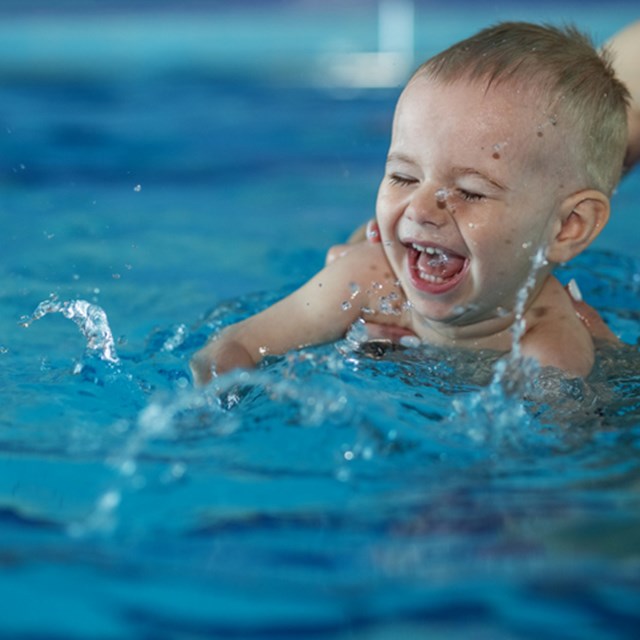
As temperatures warm and parents and caregivers head to pools, beaches, lakes, and rivers with children, it’s important to keep water safety top of mind. While poolside entertainment is great fun for the summer months, it doesn’t come without risk. Drowning is the number one cause of injury death among children ages, 1 to 4 years old. Among the children ages 1 to 4 who drowned, 58 percent did so at home, and 27 percent did so at a close friend or relatives’. Fortunately, there are many ways to help reduce the risk of drowning for all families.
Ways to Reduce the Risk of Drowning
According to the American Association of Pediatrics, parents or caregivers should:
- Always supervise children when they are in or near any body of water. Babies can drown in as little as one inch of water, so it’s important to keep them within an arm’s reach of an adult, even while in the bathtub.
- Maintain a safe home. While the majority of children drown in a pool, drownings can occur in any body of water. Make sure to supervise bath time and never leave a child alone near a source of water. This includes buckets, toilets, tubs, containers, baby pools, etc. Empty out any kiddie pools or buckets and store them when not in use. Keep bathroom doors closed at all times.
- If you are a pool owner, install a fence around the perimeter of your pool. A pool fence should surround all sides of the pool, be tall enough to prevent climbing, and be able to prevent children from slipping through it.
- Assign a ‘water watcher.’ At any social gathering where a body of water is involved, assign an adult the job of being ‘water watcher.’ This person should watch the water at all times to ensure that every child is safe. Adults can take turns having this job, but whoever it is should be alert and completely focused on watching the water. Adults shouldn’t consume alcohol while children are swimming. Phones should be stored away to avoid the urge to check social media.
- Practice ‘touch supervision’ with your child. This is especially important for children ages 5 and under or older children who are not strong swimmers or comfortable in the water. In short, adults should stay physically close to their child while in the water. Remaining within an arm’s length of your child greatly reduces the risk of drowning.
- Enroll your child in swim lessons. Drowning risks are reduced by over 85 percent in children that have completed swim lessons. Putting your child in swim lessons provides them with the skills needed to float and to swim—which can be lifesaving measures. While some parents begin swim lessons as early as 1 year old, it largely depends on your child’s comfort. Affordable and even free swim classes may be found at community recreation centers, among other places.
- Learn CPR. It’s highly encouraged that all parents or caregivers be trained in CPR, so they may provide life-saving care in an emergency like drowning.
While following these general water safety tips will greatly reduce the risk of drowning, it’s important to note that not all water-related injuries are due to drowning. Pools require considerable adult supervision, and swimming where a lifeguard is on duty is preferred for a number of reasons. Beyond drowning, every year children suffer an injury at pools because of running on slippery decks, diving in shallow waters, roughhousing, and forgetting to rest and hydrate. And while not immediately life-threatening, sunscreen (SPF 30 or higher) is crucial in preventing sunburn and skin cancer.
Water Safety Education Resources
Water safety education for all parents and caregivers should be ongoing. To learn more about ways to prevent drowning and keep your family safe, you can explore the following resources: www.healthychildren.org and PoolSafely.gov.
To find a CPR certification class near you, visit www.RedCross.org, and to locate swim classes near you, visit www.USASwimmingFoundation.org.

